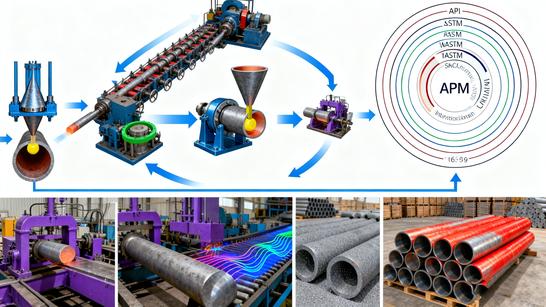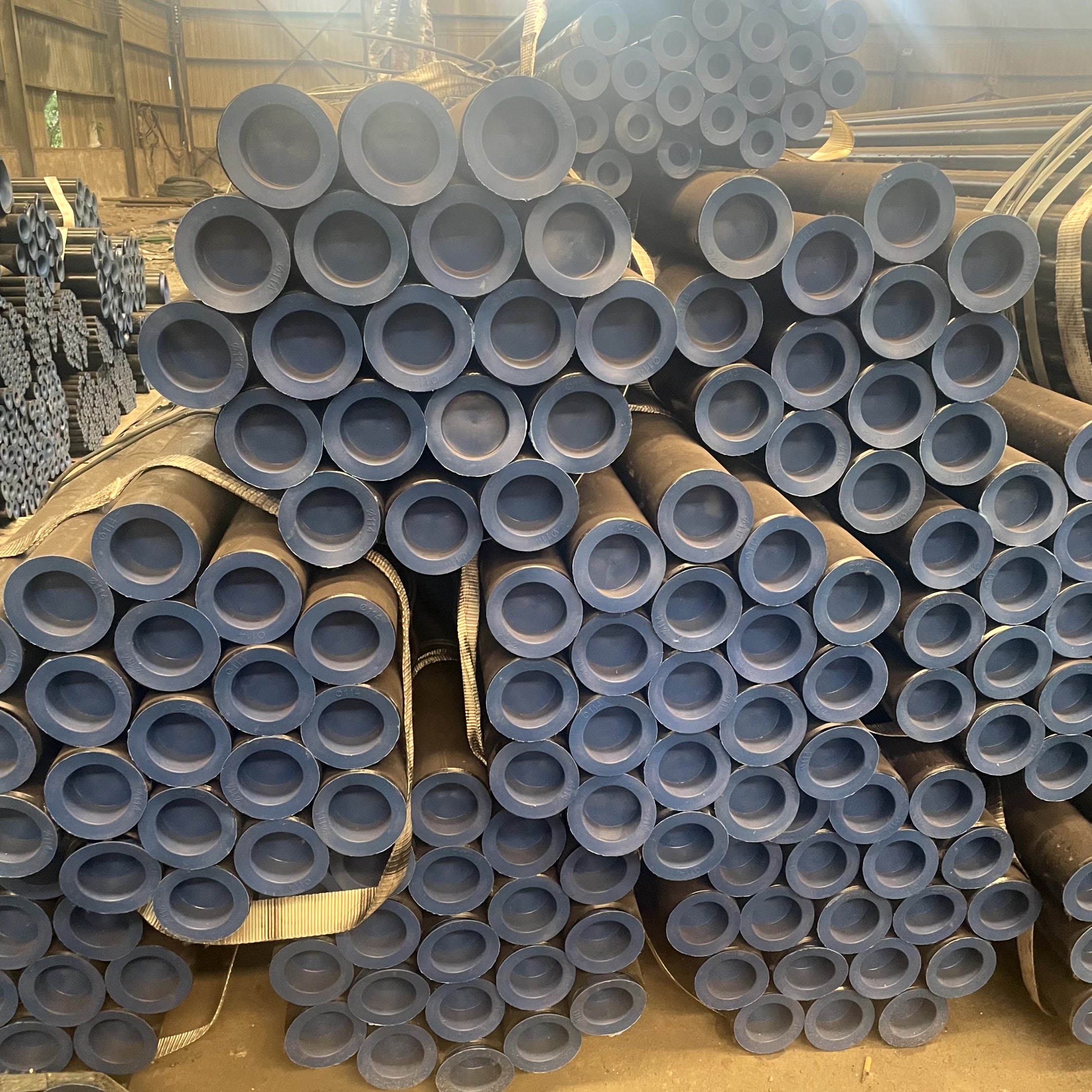The oil and natural gas industry is the lifeblood of modern society, and seamless steel pipe forms the core foundation that keeps this energy flowing. In every critical phase of exploration, extraction, transportation, and refining, specialized oil and gas pipe is required to withstand extreme pressure, temperature, and corrosive environments. Seamless steel pipe, with its inherent high strength, uniform wall thickness, and superior integrity, is the irreplaceable choice in this sector.
This article provides a comprehensive analysis of how seamless steel pipe plays a critical role across the upstream, midstream, and downstream segments of the oil and gas value chain, focusing on key API standard products like casing, tubing, and line pipe.
1. Upstream Applications: Drilling and Extraction
In the upstream sector, seamless steel pipes serve as the structural support and fluid conduits connecting the surface to subsurface reservoirs, primarily defined by API 5CT standards for casing and tubing.
1.1. Casing
-
Function: Casing refers to the large-diameter seamless pipe lowered into the wellbore after drilling. It supports the wellbore walls, isolates different geological formations, prevents collapse, and protects groundwater resources.
-
Property Requirements: Requires extremely high compressive and tensile strength to withstand formation pressures and its own dead weight.
-
Standard: API 5CT is the global benchmark for casing, with common grades including J55, K55, and N80.
1.2. Tubing
-
Function: Tubing is the smaller-diameter seamless pipe run inside the casing, serving as the direct conduit to transport oil or gas from the reservoir to the surface.
-
Property Requirements: In addition to high-pressure capability, it requires excellent corrosion resistance to withstand corrosive media like $\text{H}_2\text{S}$ and $\text{CO}_2$ found in crude oil and natural gas.
-
Standard: Also governed by API 5CT, with grades such as L80, P110, or specialized grades like C90/T95 for sour service.
2. Midstream Applications: Long-Distance Transportation
The midstream segment focuses on transporting oil and gas from the wellhead to refineries or end-users. Large-diameter, long-distance transmission pipelines (line pipe) are the core component of this segment.
2.1. Line Pipe
-
Function: Line pipe is responsible for the thousands of kilometers of transport connecting oil and gas fields, ports, and consumption centers.
-
Property Requirements:
-
High Strength: Adherence to the API 5L standard, with common grades like X52, X65, and X70, to minimize wall thickness and maximize transport efficiency.
-
High Toughness: Especially crucial in cold climates or offshore installations, where API 5L seamless pipe must meet the PSL2 specification to ensure excellent low-temperature impact toughness, preventing rapid crack propagation.
-
-
Standard: API 5L seamless pipe is one of the most critical oil and gas pipe products, and its PSL1/PSL2 specification dictates the quality level and inspection rigor.
3. Downstream Applications: Refining and Processing
In downstream facilities like refineries and petrochemical plants, piping systems must endure extremely high operating temperatures and complex chemical environments.
3.1. Process Piping
-
Function: Used to convey high-temperature steam, hydrogen, catalysts, and various corrosive chemicals.
-
Property Requirements:
-
High Temperature/Pressure Resistance: Piping must comply with standards like ASTM A106 or European EN 10216 to ensure stable operation during high-heat processes such as cracking or hydrotreating.
-
Corrosion Resistance: Alloy steel seamless pipe (such as A335 Gr. P91) is often required in many segments to resist sulfidation corrosion and hydrogen embrittlement.
-
-
Standard: Commonly used standards include ASTM A106 Grade B/C, along with various alloy steel specifications.
Hebei Cangtie's Expert Oil & Gas Piping Solutions
As a professional oil and gas pipe manufacturer, Hebei Cangtie supplies a full range of seamless steel pipe products, from upstream API 5CT casing and tubing to midstream API 5L line pipe (including the highly demanding PSL2) and downstream ASTM A106 high-temperature pressure pipe.
We are committed to ensuring every seamless pipe undergoes stringent $100\%$ NDT and hydrostatic testing, providing premium products with full traceability to help you safely and efficiently transport energy in any global climate and environment.
Return to the Seamless Steel Pipe Master Guide for comprehensive information on seamless pipe standards, manufacturing processes, and applications.





